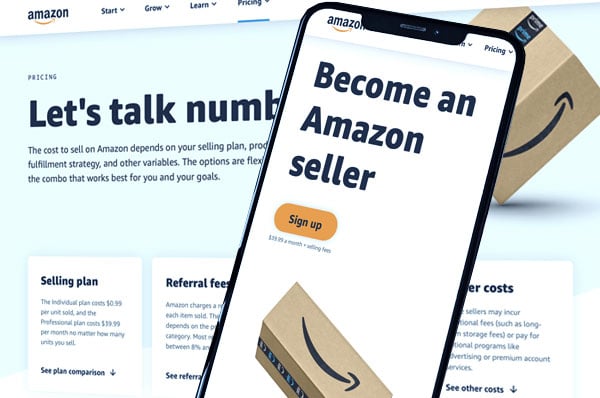Businesses that were able to pivot to online experiences capitalized on this trend, but many struggled, and continue to struggle, to meet customer demands for an e-commerce shopping experience.
If you’re one of those businesses who struggled, then the sort of digital transformation you’re probably looking for is one that brings your retail business online.
The good news is that you have several options for how to go about doing this.
For instance, you can use an already existing marketplace platform like Amazon and simply create a store page there. Many businesses have enacted a lighter digital transformation, shifting their products onto existing platforms and learning to optimize their products in accordance with what works best on that platform. This is generally a good digital transformation strategy for businesses that are consumer-focused, like retail and manufacturing businesses.
Or, you can have a developer create a bespoke commerce platform with a fully customized online store for your business. This is much more difficult and requires a much heavier investment, but allows you to create your own ecosystem through the cycle of digital transformation, which may lead to more customer loyalty, as you become the one-stop shop for your product’s consumers
A third option, and the one we often recommend, is using an existing commerce platform that will allow you to fully customize your online store to look and feel the way you want it to. This provides a lot of flexibility for branding and crafting customer journeys while avoiding the investment and headaches that come with trying to build your own platform from scratch. This is a good middle ground in digital transformation, as it allows the business to retain a lot of control over presentation without forcing said business to create an entirely new platform.
How to Start Selling Your Brand on Amazon
For many businesses, the simplest route may be the best. And if your business is focused on the American market, selling on Amazon could be the way to go.
The steps to begin selling on Amazon are pretty simple, and they go as follows:
- Create your Professional seller account on Amazon.
- Enroll your brand in the Amazon Brand Registry. This means you’ll be officially registered as an Amazon seller.
- Add your products and customize your listings with strong content, such as product descriptions, demonstration videos, etc.
- Use the Amazon Stores tool to customize your storefront.
At a glance, selling on Amazon is easy-peasy. You can be up and running in a short amount of time, and you’ll have instant access to millions of shoppers.
Of course, there are some drawbacks to just going with Amazon. For instance, while you’re being given access to those millions of shoppers, you’re also competing with countless other Amazon sellers. When a customer searches for something you’re selling, they’re going to be presented with your competitor’s products as well. This digital transformation strategy has both benefits and drawbacks, but it will be up to you to decide which route works best for your business.
Also, the customizability is limited. That means it will be harder to craft a user experience that has parity with your other retail channels. You will, in essence, be an Amazon storefront no matter how much you customize your seller page.
It’s also important to consider that Amazon isn’t necessarily the best option for international reach. The North American Amazon shopping experience is much different than that in other locales around the world, and it’s not necessarily the powerhouse platform in other places that it is here. If you’re an international business, Amazon may only be part of your digital transformation strategy, with other platforms being considered based on their reach and market share.
Still, the simplicity and ease in getting started can’t be denied. If you’re looking for the quickest solution for a digital transformation that brings your business into the online market space, Amazon could be your best bet.











